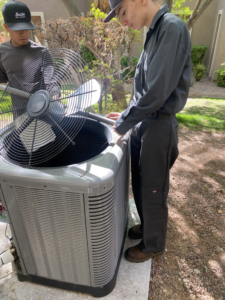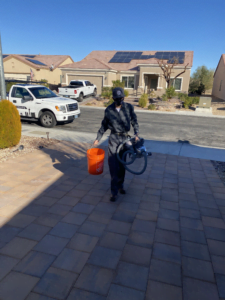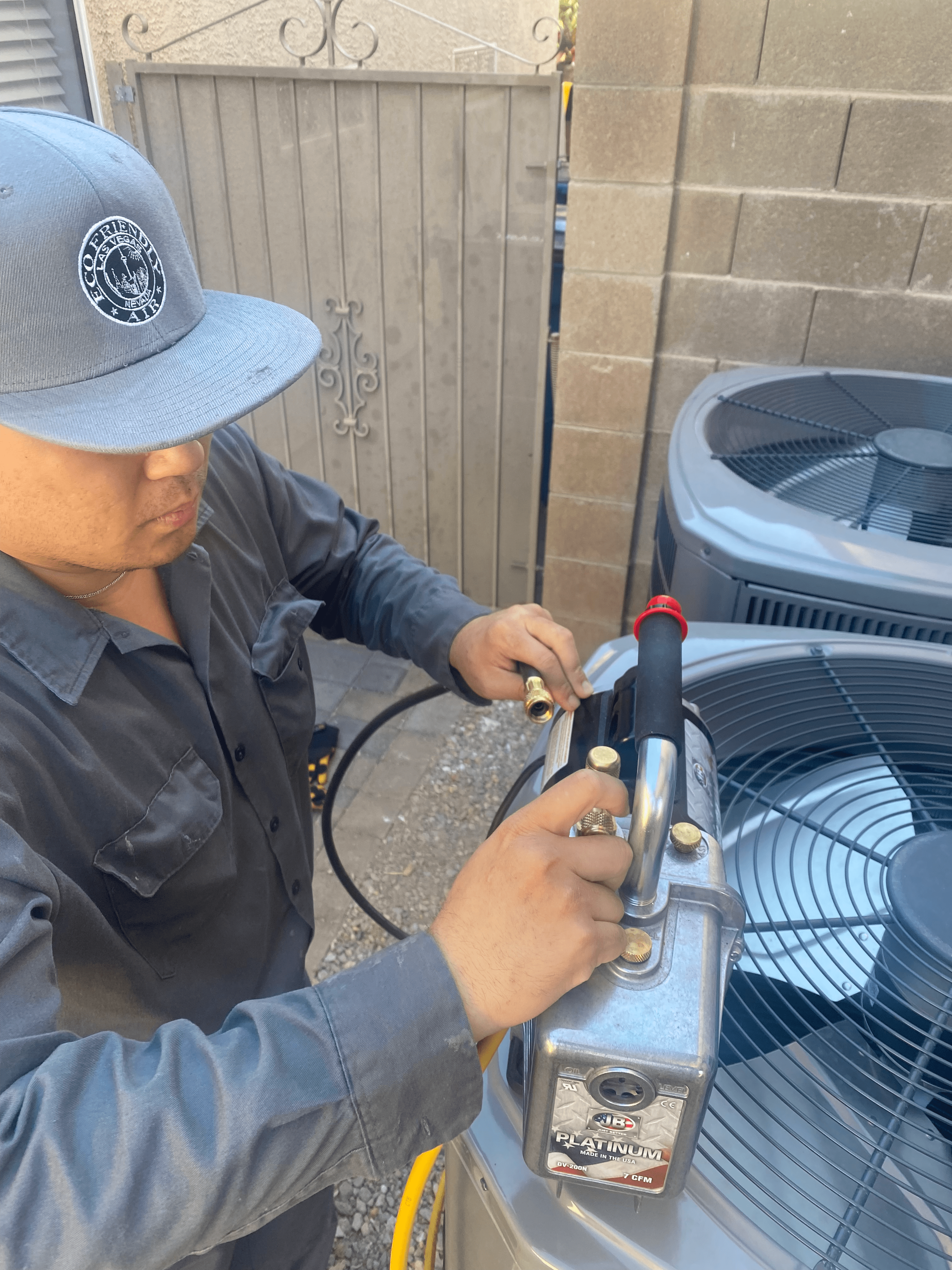AC Tune Up
-
What is Involved in an AC Tune-Up?
-
Step-by-Step AC Tune Up Guide
-
1. Turn Off AC
-
2. Wear Protective Gear
-
3. Change AC Filters
-
4. Clean Condenser Unit
-
5. Check Coolant Lines
-
6. Clean Drain Line
-
7. Check Grilles and Registers
-
8. Check Air Duct Insulation
-
9. Test Your AC
-
-
AC Tune-up Near me
-
Contact us now
- It is important to keep our air conditioning systems running efficiently. Tuning up your AC is a great way to keep it running at peak performance. Spring is the best time to conduct AC tune ups, as AC usage usually increases in the summer.New air conditioners can cost anywhere from $5000 to $12000. Yearly tune-ups on your AC extend the life of the unit, saving you money. A once-per-year AC service tune-up also helps you save on cooling and heating costs, as well. This guide explains what AC tune-ups are and how you can conduct one yourself.

AC tune-ups are essential for maintaining optimal performance and functionality of your AC system. Our professional technicians specialize in performing comprehensive inspections and maintenance to ensure all components are in proper working order. During a tune-up, our team will carefully inspect each part of your AC unit, clean them thoroughly, and address any necessary fluid refills. Additionally, filters will be replaced, and any damaged components will be promptly repaired or replaced. Our commitment to your AC system’s health drives us to provide thorough and reliable tune-up services.
If you’re inclined towards taking a do-it-yourself approach, a basic AC tune-up can be performed by cleaning specific components and inspecting others for potential damage. However, for a more comprehensive service, particularly in complex tasks such as AC installation, it is advisable to rely on the expertise of professionals. AC installation is a critical process that demands precision and specialized knowledge. An inadequately installed AC system can result in various issues down the road, such as inefficient cooling and frequent breakdowns. This is precisely why, alongside offering tune-up services, we extend our expertise in providing professional AC installation services. By entrusting us with the installation, you can have peace of mind knowing that your AC system will not only receive meticulous maintenance but also be installed correctly, ensuring optimal cooling performance throughout the summer months.Contact us now
AC Tune-up Near me
An AC tune-up is a great way to keep your system running efficiently and working at its best. Be sure to have one conducted once per year for the best results. Not only do tune-ups extend the life of your AC unit, but it also keeps you cooler and saves you money, too.
Eco Friendly Air has the AC tune-up services you need. Contact us now for more information about our AC services!
AC tune-ups are crucial for maintaining the optimal performance of your AC system. Our professional technicians will thoroughly inspect and clean all components, refill fluids, replace filters, and repair any damaged parts if necessary. Thanks to our comprehensive tune-up service, we are committed to ensuring the long-term health of your AC system.

Step-by-Step AC Tune Up Guide
To conduct an AC tune-up yourself, there are a few things you need first. Some common items you may need to do a tune-up are a shop vacuum, coil cleaner, gloves, goggles, face mask, spray bottles, soap, vinegar, distilled water, a soft-bristled brush, and a screwdriver. The following section explains how to do each step in the AC tune-up process.Contact us now
1. Turn Off AC
It is really important to turn the power off to the units before you start the tune-up. You don’t want to get any electrical injuries! For your own safety, make sure each unit is switched off. The indoor unit should have a switch near the main service panel, make sure you switch it off. The outdoor unit has its own disconnect switch. Wait 30 minutes after turning off the power to begin the tune-up.
2. Wear Protective Gear
It is always a good idea to wear protective gear when working on your AC system. At a minimum, you should wear gloves, goggles, and a face mask when doing a tune-up on your AC system. Tune-ups can be messy, so you might want to wear older clothes, also.
3. Change AC Filters
AC filters help keep dust, dirt, and other debris out of the AC. This helps the AC run better and also helps keep the air quality better. Cleaning or changing the filters is an important part of a tune-up.
The filter is usually located inside or beside the indoor cabinet. It may also be in a return duct or behind the return grille. Regularly changing or washing your AC filters is an important part of AC maintenance and should be done at least four times per year. Contact us now
4. Clean Condenser Unit
Now, it’s time to clean the condenser unit, also called the outdoor unit. Since this unit is outside, it can get a lot of dust, grime, and debris build up. It’s important to keep it clean. Sweep away any dirt, twigs, or other debris.
Take off the unit grilles or panels to access the coils. You may need a screwdriver to remove them. Inspect the coils. If there is only a light coating of dust, you can clean them with compressed air or a vacuum.
If they are very dirty or have any mold or mildew, you can clean them with soap and water. After washing, spray down with a mixture of vinegar and water. Vinegar kills bacteria and helps prevent mold growth. Then, rinse with distilled water.
5. Check Coolant Lines
The coolant lines carry coolant to and from the indoor and outdoor units. They are made of copper pipes that are covered in insulation. After you have cleaned the condenser unit, check the coolant lines. Look for any damaged or missing parts of the insulation. Replace any damaged or missing insulation, or hire an AC technician to do it for you.Contact us now
6. Clean Drain Line
Now, it’s time clean the drain line and drain pan. Remove the access panel, which will be under the indoor unit’s evaporator coils. Soak up any standing water you see with a towel or a shop vacuum. Check the drain line for any clogs. You can use the shop vacuum to remove the clogs. Clean the drain pan with soap and water. Add vinegar if there is any mold or mildew.
7. Check Grilles and Registers
Take a look at the grilles and registers. If you see any dirt or grime, vacuum them. If the grilles and registers are removable, you can wash them with soap and water.









